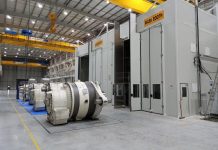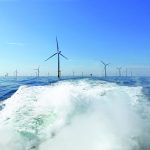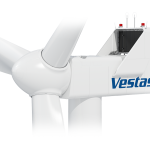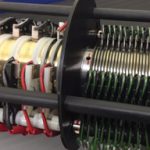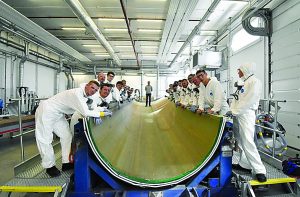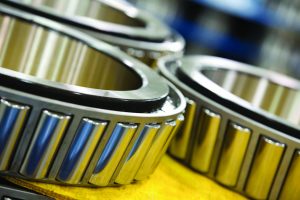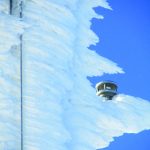Augsburg-based Renk Test System GmbH, a subsidiary of Renk AG, has delivered two unique test rigs to serve as the critical components in the world’s most powerful test center for large bearings. Commissioned by SKF in Schweinfurt recently, the test rigs will help to optimize the performance of future generations of large bearings. The objective is the development of even more compact, robust, lower-friction, and longer-lasting large bearings. The bigger of the two test rigs is the world’s first for testing not only the main bearing of a wind turbine up to 6 meters in diameter, but also the entire bearing assembly. The control software RENK Dynamic Data Systems (RDDS) enables the rig to test every conceivable load case occurring in wind-energy plants, e.g. in extreme storms or with a tumbling rotor.
The two test systems, the Main Shaft Test Rig (MSTR) and the Dynamic Development Test Rig (DDTR), are a thousand times bigger than a “normal” Renk test rig rated in kilonewtons. In contrast, the systems installed in Schweinfurt operate on a meganewton scale. With combined load input, the MSTR can act on the tested bearing with a bending moment of 40 MNm and a dynamic force of 8 MN both in axial and radial directions. The smaller DDTR, engineered to thoroughly test large bearings in the shipbuilding, mining, paper, cement, and steel industries, can deliver a commendable performance, too. It achieves speeds of up to 250 rpm while applying loads of up to 7 MN to the bearings. Such testing of new components, geometries or materials here, too, accelerates the torture suffered by the bearings.
The sheer dimensions and weight of the two test systems are gigantic. Featuring an energy recovery system, the MSTR is approximately 9 meters wide, 11 meters tall, and 8 meters deep. It weighs about 700 metric tons. The load disk alone has a weight of 125 metric tons and a diameter of about 7 meters. The deadweight of the DDTR, which also features energy recovery, is in the region of 300 metric tons. Both of the rigs are mounted on reinforced-concrete foundations weighing hundreds of tons, to ensure safe operation. Since the designs will facilitate extremely efficient testing and also contribute toward a resource-friendly production of future generations of large bearings, they have been sponsored to a total value of around 3.5 million euros by the Bavarian State Ministry for Economic Affairs and Media, Energy and Technology, and the Federal Ministry for the Environment, Nature Conservation, Building and Nuclear Safety.
These test rigs also serve as tools in basic development work. Even the most modern simulation programs are unable to faithfully reproduce all the dynamic processes to which large bearings are submitted under actual operating conditions. This is why, until now, such bearings have been engineered with “built-in safety reserves” which cannot completely exclude premature damage. Hence, experts assume that, under practical conditions, certain phenomena still occur that have not been adequately allowed for in today’s simulation models. Test rigs are intended to help analyze such situations. Among the functions is to investigate the reciprocal effects of varying lubrication conditions and bearing designs as well as materials under highly dynamic loads.
Source: Renk Test System GmbH
For more information, go to www.renk.biz

















